- Home
- L. Frank Baum
Wonderful Wizard of Oz (Barnes & Noble Classics Series) Page 16
Wonderful Wizard of Oz (Barnes & Noble Classics Series) Read online
Page 16
At length, however, she sat up and looked about her.
“Good gracious!” she cried.
For she was sitting on the broad Kansas prairie, and just before her was the new farm house Uncle Henry built after the cyclone had carried away the old one. Uncle Henry was milking the cows in the barnyard, and Toto had jumped out of her arms and was running toward the barn, barking joyously.
Dorothy stood up and found she was in her stocking-feet. For the Silver Shoes had fallen off in her flight through the air, and were lost forever in the desert.
Home Again.
Aunt Em had just come out of the house to water the cabbages when she looked up and saw Dorothy running toward her.
“My darling child!” she cried, folding the little girl in her arms and covering her face with kisses; “where in the world did you come from?”
“From the Land of Oz,” said Dorothy, gravely. “And here is Toto, too. And oh, Aunt Em! I’m so glad to be at home again!”
Here ends the story of “The Wonderful Wizard of Oz,” which was written by L. Frank Baum and illustrated by William Wallace Denslow. The engravings were made by the Illinois Engraving Company, the paper was supplied by Dwight Bros. Paper Company, and Messrs. A. R. Barnes & Company printed the book for the publishers, the George M. Hill Company, completing it on the fifteenth day of May, in the year nineteen hundred.
Endnotes
No commentary on The Wonderful Wizard of Oz is possible without Michael Patrick Hearn’s indispensable annotated editions (1973, 2000) of The Annotated Wizard of Oz: The Wonderful Wizard of Oz, the latter edition of which I refer to amply here and in my introduction. I am also indebted to Katherine Rogers’s L. Frank Baum, Creator of Oz and Michael O. Riley’s Oz and Beyond: The Fantasy World of L. Frank Baum, for their informative backgrounds to the work and the author. See “For Further Reading” for full information on these titles.
1 (p. 14) the house was as dull and gray as everything else: In some form, the adjective “gray” appears ten times in the first six paragraphs to emphasize, by repetition, the aspect of home that Dorothy has sublimated but that the audience realizes is an essential element in her outlook.
2 (p. 14) cyclone: A cyclone is a storm system in which strong winds rotate around a center of low pressure. A tropical cyclone is a hurricane. In the midwestern United States, cyclone often means tornado; the two terms were interchangeable in Baum’s day.
3 (p. 22) on the dry gray prairies: Oz announces its spectacular difference from Kansas instantly—with flowers, birds, and a river that mur muringly voices a greeting to Dorothy.
4 (p. 22) the little woman’s hat was white: White is the witch color in Oz. Dorothy does not yet know it, but the Witch of the North is the little woman in the white dress in the company of the Munchkins.
5 (p. 23) “But I thought all witches were wicked”: So did most of Baum’s audience. The appearance of a good witch is unprecedented in children’s literature and may have some bearing on Baum’s acquaintance with theosophical beliefs and his apparent indifference to established religions.
6 (p. 27) “The road to the City of Emeralds is paved with yellow brick”: While it is impossible to be certain about many of the elements in this story that at first appear to be symbolic, mixing the color of the road (yellow) and of the Munchkins (blue) yields green, the color of Dorothy’s destination.
7 (p. 31) It was gingham, with checks of white and blue: The description of Dorothy’s dress is interesting in that, while an American import into Oz, the colors of the dress include both Munchkin blue and witch white, another suggestion that Dorothy lands in Oz to fulfill her destiny.
8 (p. 32) as well as if they had been made for her: The Cinderella touch of the Silver Shoes is another twist on a familiar detail. The Shoes are talismanic objects like the Golden Cap, which also “fitted her exactly” (page 135) and that she possesses once the Wicked Witch of the West is dead.
9 (p. 32) the one paved with yellow brick: The yellow brick road is one among many symbolic referents decoded by Littlefield in his famous analysis of The Wizard of Oz as a political allegory. See Henry M. Littlefield, “The Wizard of Oz: Parable on Populism,” American Quarterly 1964 16:1, pp. 47-71.
10 (p. 50) a man made entirely of tin: Tin is not subject to rust, and in fact resists corrosion. Hearn (p. 135) reports that Russian versions of the novel describe the Woodman as made of iron.
11 (p. 53) “the girl lived with an old woman”: The Tin Woodman fell in love with a girl whose story is consistent with those of distressed young maidens of fairy tales. The difference, of course, is Baum’s indifference to the details of the romance and any erotic overtones that often play a subliminal role in the workings of fairy-tale plots.
12 (p. 63) “It seems to me they must be more cowardly than you”: Dorothy, whom the audience will identify with, at times seems in on the authorial joke that is the center of the story: None of her companions actually lacks what he seeks. Despite her flatness as a literary character, Dorothy’s approach reveals a core of common sense and confidence in the world around her.
13 (p. 67) a tree full of nuts: Was Dorothy originally a vegan? The only confirmed carnivore in the book is the Cowardly Lion, who takes his meals discreetly and always offstage. Dorothy’s usual meal is nuts and fruit, and Toto at one point has milk. Another possible bit of evidence of the influence of Theosophy on Baum.
14 (p. 70) Kalidahs: There is no consensus about the origins of this nonce word, one of Baum’s many verbal improvisations.
15 (p. 78) the kind Stork: The Stork, who always likes “to help anyone in trouble,” represents one of those deputies of benign Nature who are legion in fairy tales and children’s books, from the birds that communicate between Cinderella and her deceased mother to the robin that leads Mary Lennox to the gate of the secret garden. The Stork enunciates a principle that Dorothy repeats in her interview with the Wizard: The strength of the strong should always be in the service of the weak.
16 (p. 80) lying fast asleep among the poppies: There is nothing scientific or realistic about Baum’s use of the poppy field. The scent of poppies does not cause sleepiness.
17 (p. 86) “and obey his slightest wish”: One of the chapter’s glaring anomalies concerns the behavior of the Tin Woodman, who cries over a crushed beetle and yet can slay a wildcat (and later forty wolves) without shedding a tear.
18 (p. 94) “everything is green here”: The color-coordinated geography of Oz offers a tantalizing opportunity for students of the text to look for deeper meanings. The best summary of this, as usual, is given by Hearn, who demonstrates that the color scheme is consistent with color theory and with the positions of the primaries on the color wheel.
19 (p. 95) brownie: A brownie is a Scottish elf who secretly does children’s chores and adults’ housework. One of those indications of Baum’s interaction with fairy-tale tradition is how he includes a traditional element and either reverses it (for example, a “good witch”) or fuses it, at times oxymoronically (such as the humbug as wizard) with something of his own. Hearn also points out that the winged lady in the next chapter seems another borrowing from fairy-tale tradition.
20 (p. 96) he could not speak: Why can’t Toto speak? In The Wizard of Oz and Who He Was, Gardner pointed out that Toto does speak in Tik-Tok of Oz, where according to the Sawhorse, “All animals talk” in Oz. In the last chapter Dorothy, who learns of this, coaxes Toto into speaking:“I’ve just learned, for the first time, that you can say words—if you want to. Don’t you want to, Toto?”
“Woof!” said Toto, and that meant “no.”
“Not just one word, Toto, to prove you’re as good as any other animal in Oz?”
“Woof!”
“Just one word, Toto—and then you may run away.”
He looked at her steadily a moment.
“All right. Here I go!” he said, and darted away as swift as an arrow.
21 (p. 105) seven passages and up three flights of stairs: Both
seven and three are numbers that occur often in fantasy, where they may have a specific reference to numerology, but it is speculation to assume that Baum has any such connections in mind—here or elsewhere in the book.
22 (p. 105) one of the prettiest gowns: Dorothy changes from the blue-and-white gingham dress she put on in the land of the Munchkins.
23 (p. 106) “I am Dorothy, the Small and Meek”: Note the capitalization, which calls attention to the Wizard’s pompous identification of himself as “Great and Terrible.” Whether Dorothy intends her reply as modest mockery of the Wizard, the typography may be a tip-off that her author hardly takes his creation seriously.
24 (p. 108) “Why should I do this for you?”: Compare page 78. Dorothy’s power is moral, not physical or supernatural; she understands that the strength of the strong is or must always be in the service of the weak—an understanding that is the foundation of children’s fantasy.
25 (p. 110) “she needs a heart as much as the Tin Woodman”: The Scarecrow is resourceful but profoundly literal minded. His diagnosis of the Wizard’s “defect” is another indicator that, for all three companions, thought is irony free.
26 (p. 117) unlocked their spectacles: This is an important detail that is easily overlooked, and it explains that Dorothy’s green dress had become “pure white.” The change is also interesting since white is the witch color.
27 (p. 119) He seized his axe: There is a stylistic elegance, a nearly scriptural simplicity, in this description of the Woodman’s slaying the wolves. Hearn, in (p. 206, note 3), suggests the biblical echoes may be intentional.
28 (p. 120) “This is my battle”: Again, this description is formulaic and reminiscent of many such moments in fairy tales.
29 (p. 123) “she is protected by the Power of Good, and that is greater than the Power of Evil”: This is the prime directive of all fairy tales.
30 (p. 128) no longer prisoners in a strange land: This and several such details here and in the next chapter produce interesting parallels with the great deliverance narrative of Western literature, the book of Exodus. Dorothy and her companions are enslaved; water is an essential weapon in their deliverance; and the narrator self-consciously refers to herself and her friends as “prisoners in a strange land”; and the day of deliverance we learn will be commemorated by the Winkies “as a holiday, then and ever after” (p. 131).
31 (p. 135) carry her sunbonnet in the basket: This is the same pink sunbonnet Dorothy dons in chapter III (p. 31).
32 (p. 140) the little whistle she had always carried about her neck: Commentary is unable to explain this suddenly appearing accessory. The Wicked Witch used a whistle to summon the wolves, crows, and bees, but this is clearly not that whistle.
33 (p. 144) “made us enslave the Winkies”: The story of Quelala and Gayelette supplies a thumbnail history of Oz geopolitics. The arrival of the Wizard from Omaha obviously would have preceded the show-down described here. Oz apparently had held the whole territory in his control until the Golden Cap inexplicably “fell into the hands of the Wicked Witch of the West,” who used the Winged Monkeys to drive the Wizard from the West, which she then either repossessed or conquered, and to enslave the Winkies. See Hearn (p. 269, note 15) for his encapsulation.
34 (p. 148) at four minutes after nine o’clock the next morning: This is one among a handful of details that seem to be clues but that lead nowhere.
35 (p. 148) He had once met the Winged Monkeys in the Land of the West: A veiled reference to the Wizard’s expulsion from the Land of the Winkies in chapter XIV (p. 144).
36 (p. 149) “I am everywhere”: Is this a parody of the language of traditional Revelation (which features both a good deal of green as well as emerald)? There is little or no overt parody in The Wonderful Wizard of Oz—certainly nothing like what one finds in British children’s fantasy of the period—and no vicious satire. On the other hand, Baum’s theosophical interests and his gently dismissive attitude toward conventional religion may be at work here. Rogers points out his “personal interest in nontraditional religion and opposition to the organized churches” of his day (as well as his support of women’s suffrage) is on record in the editorials that he wrote in 1890 and 1891 for the Aberdeen Saturday Pioneer, in which he advances the claims of Theosophy and at times sounds like a Jeffersonian Deist. See Rogers, L. Frank Baum, Creator of Oz, pp. 33-34.
37 (p. 150) “I am Oz, the Great and Terrible,” said the little man: The scene of the Wizard’s unmasking, one of the classic moments in American literature, inspired one of the most unforgettable lines in American cinema—“Pay no attention to the man behind the curtain!” Oz, like his creator (who sold dry goods at one point in his life), is at bottom a hardworking salesman.
38 (p. 153) “and found the balloon floating over a strange and beautiful country”: The nearest precedent for a balloon ride that delivers its occupants to a land of mystery was Jules Verne’s Mysterious Island (1874). Verne used balloon transport as well in Five Weeks in a Balloon (1863) and Around the World in Eighty Days (1873).
39 (p. 160) “bran-new brains”: This is one of many examples of the puns that Baum loved so much. Hearn is terrific at tracking these down.
40 (p. 168) “Hot air isn’t as good as gas”: The earliest balloons used hot air, later replaced with gas, so the Wizard’s knowledge is state-of-the-art in 1900.
41 (p. 176) “Glinda is a beautiful woman”: This is Baum’s second violation of traditional witch typology.
42 (p. 179) “Attacked by the Fighting Trees”: Excepting the Fighting Trees, the 1939 MGM movie eliminated these last chapters, which include the help of the Winged Monkeys, the encounter with the Hammer-Heads, and the visit to the country of the dainty china people. The fighting trees have a vague literary lineage. Every commentator points inevitably to Dante’s Forest of the Suicides in Inferno, canto XIII, where sinners are translated into sentient vegetation that cries aloud when it is “wounded.”
43 (p. 192) he upset a china church with his tail and smashed it all to pieces: In an interesting detail, the only object directly destroyed by the companions is a house of worship.
44 (p. 207) Her hair was a rich red. . . . Her dress was pure white; but her eyes were blue: An attentive reader, following the narrative’s color codes, will probably react to the coincidence of a redheaded women with blue eyes in a white dress.
Inspired by The Wonderful Wizard of Oz
Sequels
L. Frank Baum wrote thirteen sequels to the original Oz tale, elaborating on the fantastic inhabitants of that enchanted land. He dedicated the first sequel, The Marvelous Land of Oz (1904), to David C. Montgomery and Fred A. Stone, the actors who played the Tin Woodman and the Scarecrow in Baum’s successful musical The Wizard of Oz (discussed below). In The Marvelous Land of Oz, the Scarecrow, whom the Wizard named as his successor at the end of The Wonderful Wizard of Oz, enjoys his position as ruler of Oz. (The prominence of the Scarecrow in the 1904 book, which does not feature Dorothy, was most likely the result of his stage counterpart’s great popularity.) Baum seems to have written The Marvelous Land of Oz with an eye toward stage adaptation: Part of the plot involves an army of women—easily imagined as high-kicking chorus girls—who challenge the Scarecrow’s legitimacy. The plot’s entanglements unwind at the hand of Glinda the Good Sorceress, who reveals that the young boy Tip is really Ozma, the rightful ruler of Oz, magically transformed into a boy by the wicked witch Mombi. Though the plot surprise may seem unorthodox, sex changes were familiar in popular theater of the day. Glinda then compels Mombi to restore Ozma to her true form.
Dorothy returns to the series in Ozma of Oz (1907), having aged about five years. She is whisked to Oz for the second time when she is washed overboard during a storm while on a voyage to Australia with Uncle Henry. She floats to land on a chicken coop, accompanied by a talking chicken, Billina. She meets Tik-Tok the mechanical clockwork man, and the vain Princess Langwidere, who, for variety’s sake, wears a new head every day. Doro
thy, with key assistance from Billina, eventually rescues Ozma and her band of friends, who had been transformed into decorative objects by the evil king of the nomes, Roquat of the Rock.
Dorothy and the Wizard in Oz (1908) reunites the heroine with the Wizard in an underground glass city. The remaining Oz books by Baum, which he continued writing until the end of his life, are The Road to Oz (1909), The Emerald City of Oz (1910), The Patchwork Girl of Oz (1913), Tik-Tok of Oz (1914), The Scarecrow of Oz (1915), Rinkitink in Oz (1916), The Lost Princess of Oz (1917), The Tin Woodman of Oz (1918), The Magic of Oz (1919), and Glinda of Oz (1920). Dorothy is not the main character but appears as one of the secondary characters in The Patchwork Girl of Oz, The Lost Princess of Oz, The Tin Woodman of Oz, and The Magic of Oz. She also appears at the ends of Tik-Tok of Oz, The Scarecrow of Oz, and Rinkitink in Oz. Baum’s imaginative powers shine particularly in The Emerald City of Oz and in the final four novels. In addition to the novels, Baum created the Little Wizard Series, a collection of six short Oz tales, and The Woggle-Bug Book, a series of Sunday comics he wrote in 1904 and 1905.
After Baum’s death, Ruth Plumly Thompson wrote nineteen Oz sequels, beginning with The Royal Book of Oz (1921) when Thompson was only twenty years old. After Thompson’s run, John R. Neill wrote three Oz books. Neill had illustrated every Baum and Thompson Oz book except for the first, replacing W. W. Denslow after The Wonderful Wizard of Oz. After Neill’s contributions, Jack Snow wrote two, Rachel Cosgrove wrote one, and Eloise McGraw and Lauren McGraw Wagner wrote one. The final Oz book, The Laughing Dragon of Oz (1934), was written by Baum’s eldest son, Frank Joslyn Baum, who is better known for his biography of his father: To Please a Child: A Biography of L. Frank Baum, Royal Historian of Oz (1961).

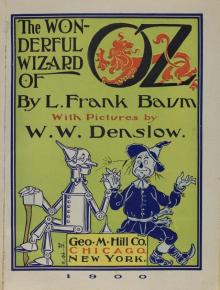 The Wonderful Wizard of Oz
The Wonderful Wizard of Oz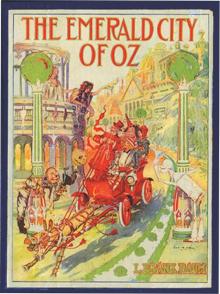 The Emerald City of Oz
The Emerald City of Oz The Story of Peter Pan, Retold from the fairy play by Sir James Barrie
The Story of Peter Pan, Retold from the fairy play by Sir James Barrie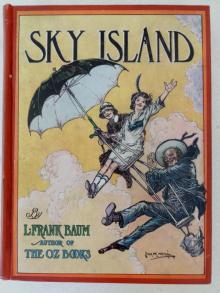 Sky Island
Sky Island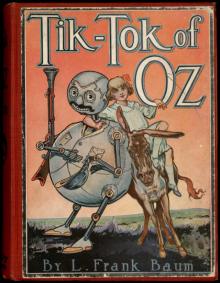 Tik-Tok of Oz
Tik-Tok of Oz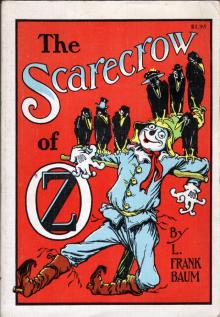 The Scarecrow of Oz
The Scarecrow of Oz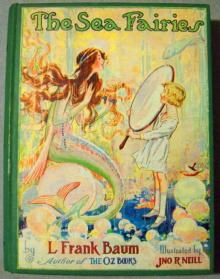 The Sea Fairies
The Sea Fairies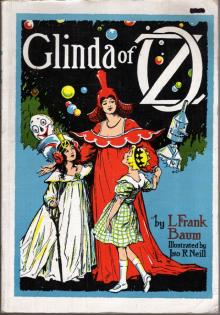 Glinda of Oz
Glinda of Oz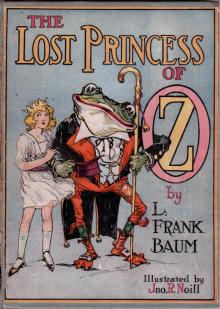 The Lost Princess of Oz
The Lost Princess of Oz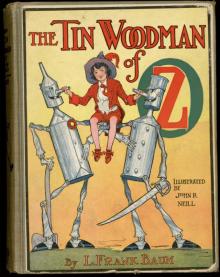 The Tin Woodman of Oz
The Tin Woodman of Oz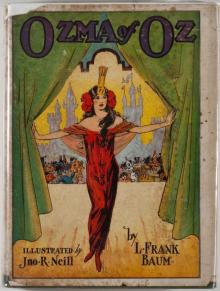 Ozma of Oz
Ozma of Oz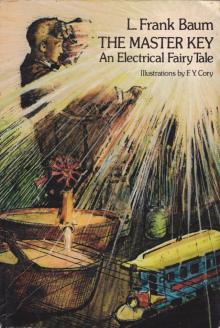 The Master Key
The Master Key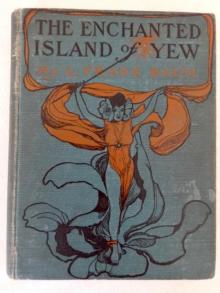 The Enchanted Island of Yew
The Enchanted Island of Yew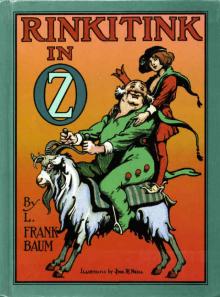 Rinkitink in Oz
Rinkitink in Oz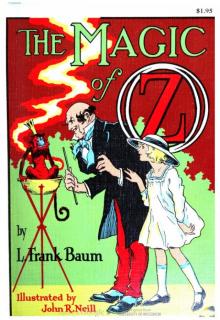 The Magic of Oz
The Magic of Oz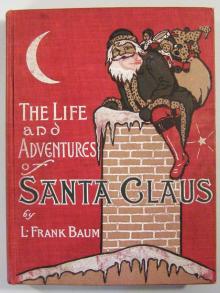 The Life and Adventures of Santa Claus
The Life and Adventures of Santa Claus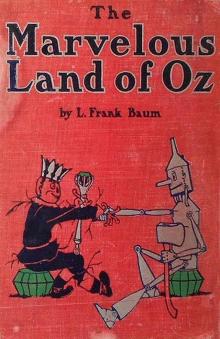 The Marvelous Land of Oz
The Marvelous Land of Oz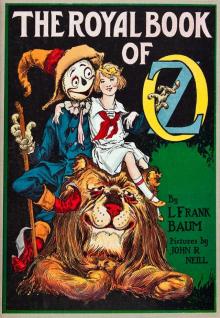 The Royal Book of Oz
The Royal Book of Oz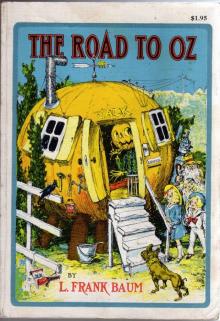 The Road to Oz
The Road to Oz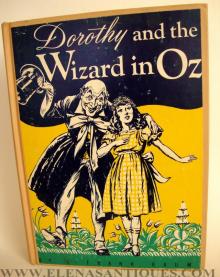 Dorothy and the Wizard in Oz
Dorothy and the Wizard in Oz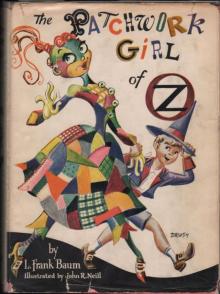 The Patchwork Girl of Oz
The Patchwork Girl of Oz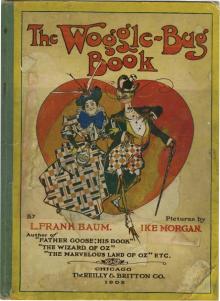 The Woggle-Bug Book
The Woggle-Bug Book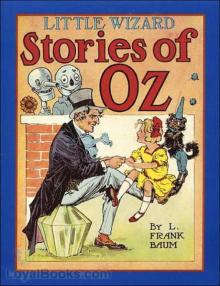 Little Wizard Stories of Oz
Little Wizard Stories of Oz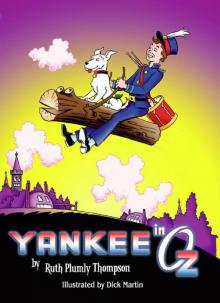 Yankee in Oz
Yankee in Oz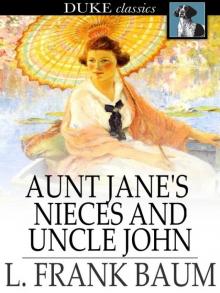 Aunt Jane's Nieces and Uncle John
Aunt Jane's Nieces and Uncle John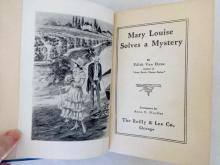 Mary Louise
Mary Louise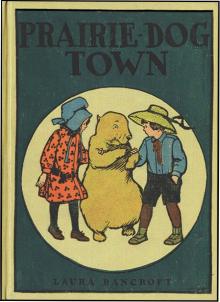 Prairie-Dog Town
Prairie-Dog Town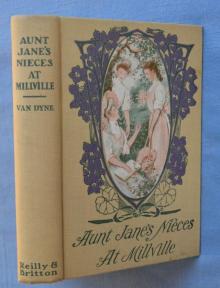 Aunt Jane's Nieces at Millville
Aunt Jane's Nieces at Millville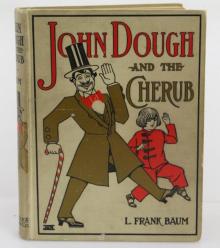 John Dough and the Cherub
John Dough and the Cherub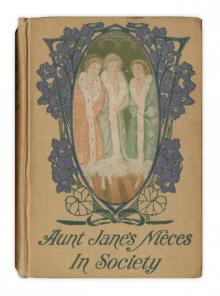 Aunt Jane's Nieces in Society
Aunt Jane's Nieces in Society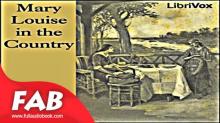 Mary Louise in the Country
Mary Louise in the Country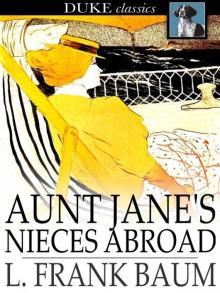 Aunt Jane's Nieces Abroad
Aunt Jane's Nieces Abroad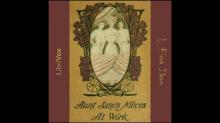 Aunt Jane's Nieces at Work
Aunt Jane's Nieces at Work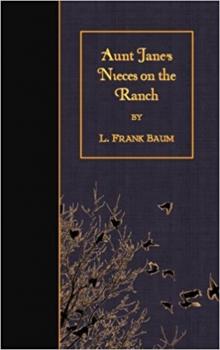 Aunt Jane's Nieces on the Ranch
Aunt Jane's Nieces on the Ranch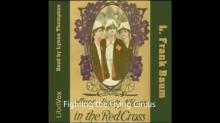 Aunt Jane's Nieces in the Red Cross
Aunt Jane's Nieces in the Red Cross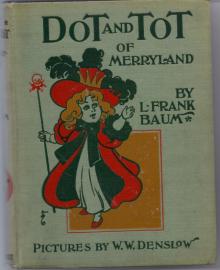 Dot and Tot of Merryland
Dot and Tot of Merryland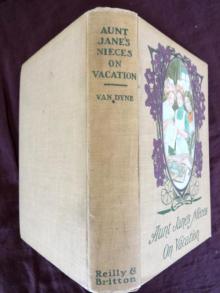 Aunt Jane's Nieces on Vacation
Aunt Jane's Nieces on Vacation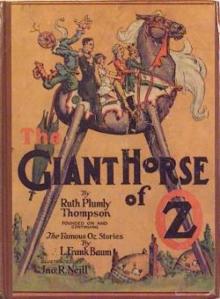 The Giant Horse Of Oz
The Giant Horse Of Oz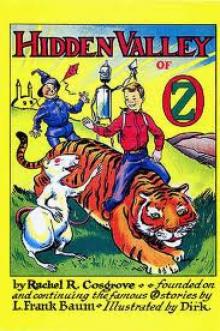 The Hidden Valley of Oz
The Hidden Valley of Oz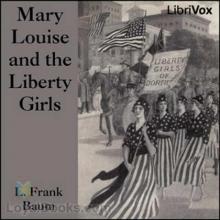 Mary Louise and the Liberty Girls
Mary Louise and the Liberty Girls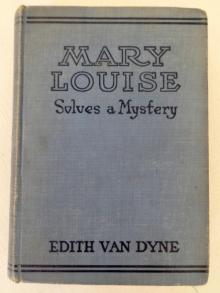 Mary Louise Solves a Mystery
Mary Louise Solves a Mystery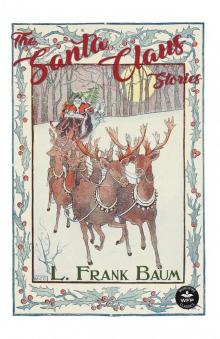 The Santa Claus Stories
The Santa Claus Stories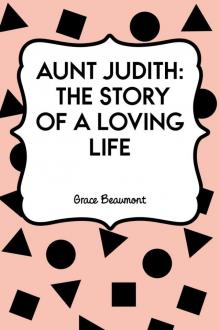 Aunt Judith: The Story of a Loving Life
Aunt Judith: The Story of a Loving Life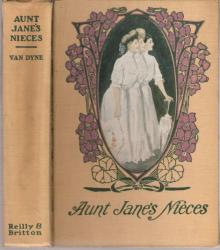 Aunt Jane's Nieces
Aunt Jane's Nieces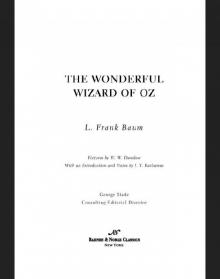 Wonderful Wizard of Oz (Barnes & Noble Classics Series)
Wonderful Wizard of Oz (Barnes & Noble Classics Series) Oz, The Complete Collection
Oz, The Complete Collection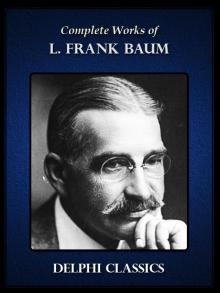 Complete Works of L. Frank Baum
Complete Works of L. Frank Baum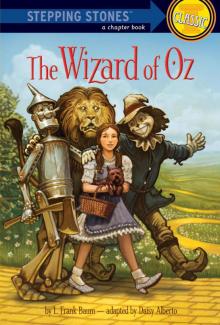 The Wizard of Oz
The Wizard of Oz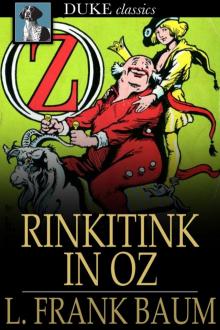 Oz 10 - Rinkitink in Oz
Oz 10 - Rinkitink in Oz